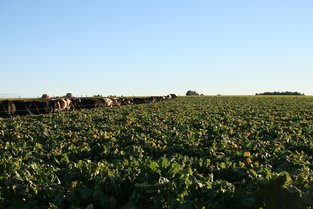Double cropping asking for trouble
There’s quite a bit of interest in double cropping this year and by ‘double’ we mean sowing the same crop in the same paddock over two or more years.
It’s seen as a cost-saving measure but unfortunately it’s likely to cost more than it saves. In Otago and Southland, fungal disease is the big risk with this practice – think dry rot in swedes, or club root in many brassicas.
The pathogens responsible for these diseases are very good at surviving in the soil, and giving them two or more years of their preferred host crop is just creating an ever-increasing reservoir of disease for the future.

Besides, who can afford to lose winter crops or have poor yields when the time comes to graze them? They’re sown for one reason – to feed animals when there’s not enough pasture to go round. And that means they’re too important to risk by re-planting the same species in the same paddock this spring.
As some have observed, New Zealand does not have major disease issues with fodder beet. Yet. The best way to get problems however is to double crop fodder beet, and we are likely to see more issues as areas of beet increase.
Best practice both for individual farmers and the wider industry is to limit the chances of this happening through good crop husbandry, and that starts with good crop rotation.
Rotation is one of the most effective tools to prevent pathogen build up in the soil.
Fodder beet, followed by swedes, followed by kale, for example, can work well, provided some land on the farm continues to be renewed in new pasture each year. Otherwise rates of pasture renewal start falling behind.
It’s really important farmers do not reduce the number of hectares that would normally go into young pasture this spring, because this will in turn reduce the amount of feed available on-farm, creating an even bigger problem for next year.

